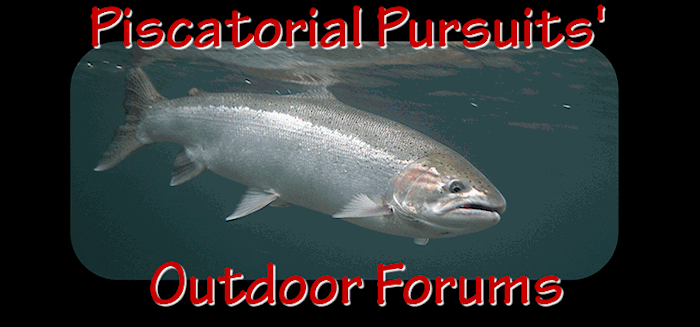Milt Roe -
I understand what you are saying about the massive numbers of hatchery fish planted in Puget Sound Rivers. However it is intersting how little of a "foot-print" those hatchery fish have left in those river systems. What little genetic sampling information that is available has shown that in many of the PS basins there are still significant genetic differences between their wild fish and the Chamber's Creek winters. Equally important there are considrable phenotype differences between the hatchery and wild fish.
Also in areas here the hatchery planting have been discontinued (Nisqually and Cedar0 or with a shorter history of planting (Nooksack) or with no history of planting those Chambers Creek fish (Vancouver Island) have all demostrated the same poor returns of fish. Could there be a genetic factor in some areas - probably though the evidence available suggests that it is not a dominating factor in the status of the Puget Sound fish.
It is really interesting that the status of the fish on Vacouver Island (especailly those on the East side mirrors foudn in Puget Sound. Those streams have not been netted by the tribes and have been managed under wild release for decades. As with the Puget Sound fish the clear indication is that those fish and their smolts are surviving poorly.
The poor survival points to two major factors - poor freshwater habitats and terrible marine survivals. Based on what have seen of the habitats on the North Sound Rivers (Nooksack, Skagit, Stillaguamish and Snohomish) the poor quality of the over-winter habitat for the fry and parr is the most obvious missing factor.
Sorry but all this ranting about factors other than those directly afftecting the freshwater survival of the young fish or the marine survival of the smolts is in my opinion diverting attention from where the discussion needs to be if there is to be constructive actions for improvement of the resource status.
While there may be exceptions most familar with the habitat situations on most Puget Sound Rivers (fsih biologists, habitat biologists, ecologist, etc) agree that there major problems in that arena. Teh net result is that two of the major VSP facotrs that the feds talk about are lacking - capacity and productivity.
Tight lines
Curt













 Previous Topic
Previous Topic Index
Index



